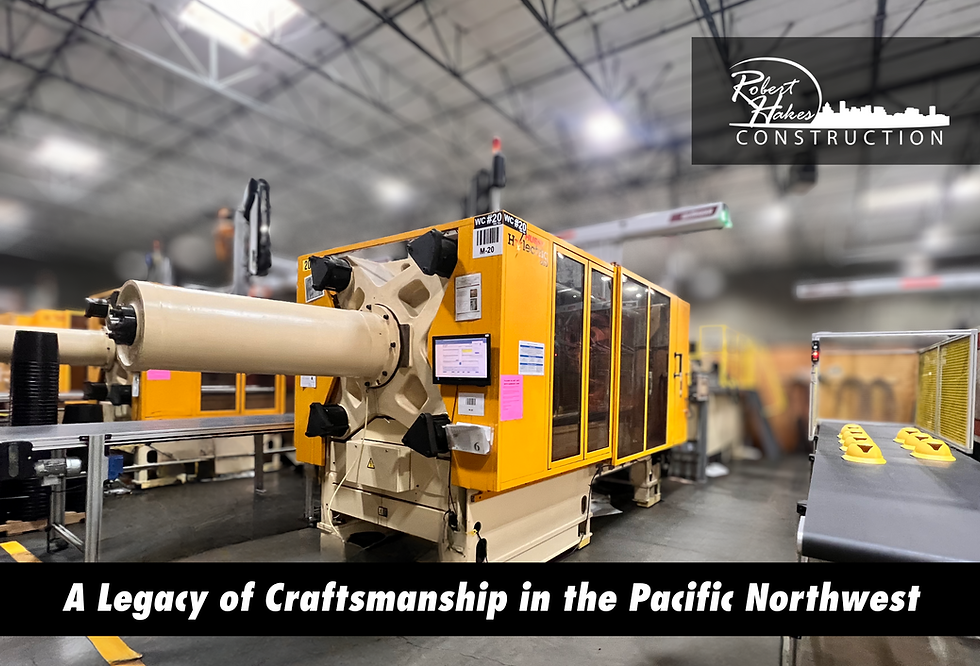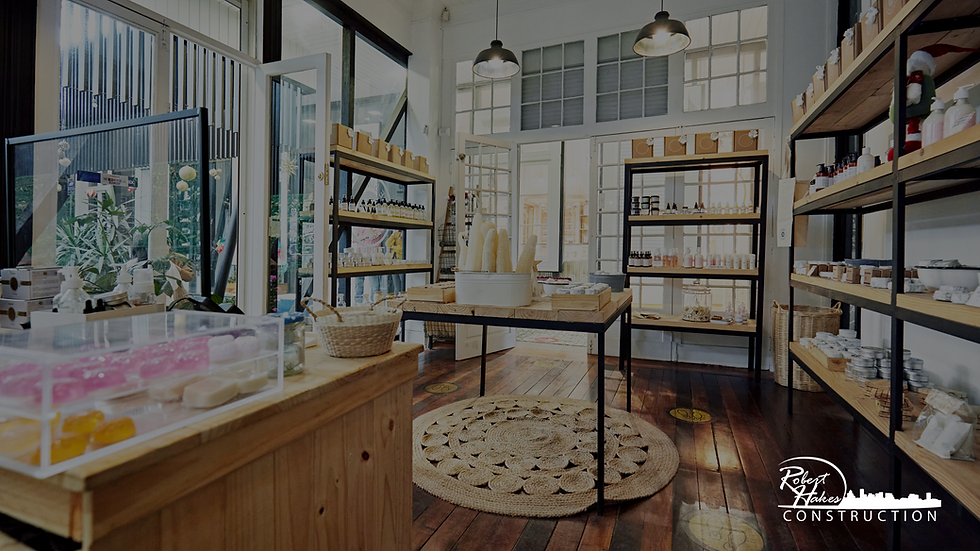Hammer Out the Ultimate Industrial Kitchen for Your Restaurant, Café, or Bar
- Robert Hakes Construction
- May 19
- 4 min read
Hello Builders and Chefs! This week, the Robert Hakes Team is thrilled to shine a spotlight on the incredible restaurant, café, and bar owners we've partnered with throughout the Pacific Northwest. When embarking on the journey to construct or remodel a commercial kitchen, having a foolproof plan is essential to achieve culinary success. After all, food is the cornerstone of life, and your kitchen should be equipped with the finest tools to craft your gastronomic masterpieces.
Whether you're planning to launch a catering service, establish a delivery-only restaurant, or expand a large food chain, having the ideal kitchen blueprint can significantly enhance your efficiency and pave the way for success.
Industrial kitchens are the skyscrapers of the culinary world—expansive, robust facilities designed to handle high-volume food production, offering businesses the framework needed to streamline operations and satisfy customer demands. Our comprehensive guide explores various industrial kitchen designs, each tailored to specific business models and production needs.
Understanding Industrial Kitchens
An industrial or commercial kitchen is a well-oiled machine, featuring cutting-edge technologies and layouts optimized for mass food production. These kitchens are essential for businesses needing large-scale food prep, from catering services to delivery-only restaurants and franchises ready to build their empire.
Key Benefits:
Enhanced Production Capacity:
Industrial kitchens are engineered to handle substantial output, enabling businesses to meet significant customer demands swiftly. These kitchens are equipped with high-capacity appliances and ample workspace, allowing for the simultaneous preparation of large quantities of food. This design not only increases production efficiency but also reduces the time required to fulfill orders. As a result, businesses can cater to larger events or high-demand periods without compromising on quality or speed, ensuring customer satisfaction and boosting profitability.
Cost Efficiency:
Sharing kitchen space can significantly reduce overhead costs, particularly in shared or ghost kitchens where expenses for equipment and rent are distributed among multiple businesses. By pooling resources, businesses can access top-of-the-line kitchen equipment without bearing the full financial burden. This collaborative model also allows entrepreneurs to enter the market with lower startup costs, fostering innovation and growth. Additionally, shared kitchens often include utilities and maintenance in their fees, further reducing financial strain on individual businesses.
Streamlined Operations:
Efficient kitchen layouts eliminate bottlenecks, resulting in a smooth workflow from food preparation to delivery. These kitchens are designed with strategic placement of equipment and workstations, allowing staff to move seamlessly between tasks. This organization minimizes delays and errors, improving overall productivity. Furthermore, streamlined operations enhance the quality of service, as food can be prepared and served more quickly, meeting customer expectations and increasing turnover rates.
Scalability:
These kitchens provide a sturdy foundation for businesses planning to expand their operations. With scalable infrastructure in place, businesses can easily increase production capacity as demand grows. This flexibility allows companies to test new menu items or launch new services without the need for substantial upfront investment. Moreover, scalable kitchens can adapt to changing market trends, offering businesses the agility to pivot and capitalize on new opportunities swiftly.
Regulatory Compliance:
Constructed to meet stringent health and safety standards, these kitchens ensure your business remains compliant with all regulations. They are built with materials and designs that facilitate easy cleaning and maintenance, reducing the risk of contamination. Regular inspections and adherence to industry standards help avoid costly fines and protect the business's reputation. By operating in a compliant kitchen, businesses can focus on delivering quality products while assuring customers of their commitment to safety and hygiene.
Types of Industrial Kitchens:
Shared Kitchens:
These kitchens are a boon for startups and small businesses, offering an affordable solution to high overhead costs. By sharing space and equipment with other culinary entrepreneurs, businesses can significantly reduce expenses. This setup fosters a collaborative environment where chefs and cooks can exchange ideas and techniques, while also providing flexible rental terms, allowing businesses to scale up or down as needed.
Dedicated Kitchens:
Tailored for established brands, dedicated kitchens provide exclusive control over the kitchen space, ensuring that operations run smoothly and consistently. These kitchens are designed for businesses with multiple locations, requiring uniformity in food preparation and quality. With full ownership of the kitchen's layout and equipment, companies can innovate and refine their processes without external interference, thereby enhancing brand integrity and customer satisfaction.
Ghost Kitchens:
Specifically designed for delivery-only models, ghost kitchens eliminate the need for a dining area, focusing instead on efficiency and cost-effectiveness. These kitchens streamline operations by optimizing space and resources for high-volume production. Ideal for brands looking to expand their reach through online platforms, ghost kitchens enable quick adaptation to market trends and customer preferences, while minimizing real estate and operational costs.
Catering Kitchens:
Catering kitchens are uniquely designed to handle the preparation of large quantities of diverse menu items, ensuring that each dish meets high-quality standards. Equipped with specialized appliances and ample storage space, these kitchens cater to events ranging from intimate gatherings to grand celebrations. Catering kitchens prioritize organization and scalability, allowing chefs to manage multiple orders simultaneously while maintaining the flexibility to customize menus to client specifications.
Choosing the Right Kitchen:
Selecting the perfect kitchen for your business involves carefully considering several critical factors. Begin by examining your business model to understand the specific needs and functionalities your kitchen must fulfill. The production volume is another vital aspect; a high-volume operation may require more extensive facilities and equipment than a smaller-scale business.
Location plays a crucial role in your decision-making process as well. The proximity to suppliers, customer base, and compliance with local zoning laws can significantly influence your choice. Equipment requirements should align with the type of cuisine you plan to offer and the efficiency you wish to achieve.
Budget constraints are also key; it's essential to balance your aspirations with financial reality. Thoroughly assessing these factors will guide you in choosing the most appropriate kitchen type, whether it's a commercial, industrial, or a more specialized setup.
For those interested in exploring the benefits of an industrial kitchen, such facilities can significantly boost your restaurant's performance by enhancing efficiency and output. Robert Hakes Construction specializes in creating customized kitchen solutions that meet diverse business needs.
Are you ready to transform your culinary operations? Contact our team today to schedule a design consultation. We will provide you with an estimate and demonstrate how these strategic solutions can be seamlessly integrated into your operations, ensuring your kitchen is not just a place to cook, but a hub of innovation and success.




Comments